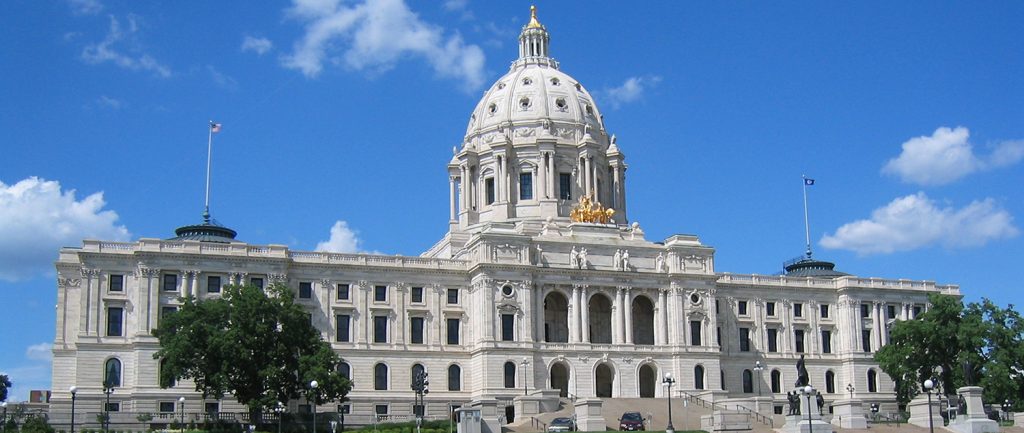Governor Mark Dayton and Lt. Governor Tina Smith today unveiled their 2017 Tax Bill, which would provide $300 million in tax cuts for more than 450,000 Minnesotans and in aid payments to local governments for essential services, while protecting the state’s long-term fiscal health. The Dayton-Smith Tax Bill also would reduce taxes for Minnesota farmers and landowners to help build an economy that works for everyone, everywhere in Minnesota. And their proposal would eliminate tax loopholes for corporations – leveling the playing field for businesses.
“Our tax bill provides relief to more than 450,000 Minnesotans. It provides assistance to those who need it most, while protecting the progress we have made to stabilize our state’s finances,” Gov. Dayton said. “I look forward to working with the Legislature to find a commonsense solution that prioritizes the needs of Minnesota families.”
The tax cuts would make high-quality child care more affordable for Minnesota families, and cut property taxes for Minnesota farmers who have seen their property taxes increase 114 percent in the last decade.
114 percent in the last decade.
“Minnesota’s farm communities are the backbone of Minnesota’s economy. The last several years have been challenging for many Minnesota farmers, who are facing low commodity prices and rising property taxes,” said Lt. Governor Tina Smith. “Our tax bill would provide significant relief to farmers by buying down the cost of local school district levies. I urge the Legislature to provide this needed tax relief for Minnesota farm families this session.”
Gov. Dayton and Lt. Governor Smith’s Tax Bill would help make work pay for low-income adults by expanding the Working Family Tax Credit. The program mirrors the federal Earned Income Tax Credit, which has been noted as one of the most effective anti-poverty tools by proponents ranging from Presidents Reagan to Obama. This credit benefits Minnesotans across the state.
In addition to investing in Minnesota families, the Governor and Lt. Governor’s proposal would strengthen Minnesota communities by increasing Local Government Aid by $20 million and County Program Aid by $10 million. This funding helps municipal and county governments provide essential services like police and fire protection, instead of relying solely on property taxes.
The Dayton-Smith Tax Bill would further invest in Minnesota’s water quality by providing aid payments to Minnesota farmers who participate in a water quality buffer strip program. The bill would provide counties and watershed districts $10 million in ongoing aid to help implement riparian buffer protection and water quality practices.
To reform Minnesota’s corporate tax law system, Gov. Dayton and Lt. Gov. Smith’s Tax Bill would close a variety of corporate tax loopholes that allow big businesses to shelter income, use tax deductions unavailable to regular Minnesotans, and evade the intent of Minnesota’s tax laws. These reforms would level the playing field for ordinary Minnesotans and small businesses.
More Information about the Dayton-Smith Tax Proposal
Gov. Dayton and Lt. Gov. Smith support a balanced, commonsense approach to tax cuts that prioritizes middle class Minnesota families and the state’s long-term fiscal health. More information about their tax cut proposal is below.
· Federal Tax Conformity – By aligning Minnesota’s tax code to tax relief enacted by President Obama and Congress in 2015 and 2016, the Governor and Lt. Governor’s tax proposal would provide $21 million in targeted tax cuts for middle class families. Governor Dayton and Lt. Governor Smith’s proposal would benefit college students and their families paying for higher education, teachers buying classroom supplies, homeowners who refinance their mortgages, and new homeowners paying mortgage insurance.
· Working Family Tax Credit – The Working Family Tax Credit makes work pay by supplementing the wages of low-income workers. The Governor and Lt. Governor’s proposal would broaden the reach of the Working Family Credit, investing $93.9 million to make 107,000 new households eligible. Over 260,000 families currently receiving the credit would see an increase. The average family would save an additional $124 per year.
· Making Child Care More Affordable – Child care costs Minnesota families over $10,000 per year for each child, on average – some of the highest costs in the country. But under current law, only 33,000 Minnesota families are eligible to receive tax credits for child care. Gov. Dayton and Lt. Gov. Smith’s proposal would expand eligibility for these tax credits to a total of 95,000 Minnesota families, providing $61 million in tax cuts. Another 75,000 families, who were already eligible, would save an additional $379 per year.
· Cutting Property Taxes for Minnesota Farmers – Farm property taxes in Minnesota have increased 114 percent in the last decade. This problem has been compounded by low commodity prices and rising agricultural land values. To help relieve property tax burdens on Minnesota farmers, Gov. Dayton and Lt. Gov. Smith have proposed a credit worth $34 million for owners of agricultural property equal to 40 percent of their property taxes attributable to school district debt levies.
· Funding for Essential Services – Minnesotans rely on their municipal and county governments to provide essential services like police and fire protection. Even after investing additional funding in Local Government Aid (LGA) and County Program Aid (CPA) over the last several years, cities and counties have still not recovered from a decade of previous cuts. LGA and CPA funding is still lower than it was in 2002, causing local governments to raise property taxes to pay for these vital public services. Gov. Dayton and Lt. Gov. Smith have proposed a $30 million investment to support these important programs and relieve the burden on Minnesota property owners.
· Investing in 21st Century Classrooms – All Minnesota students need a world-class education, no matter where they live. However, in school districts without high-value land, the burden of paying for modern schools can fall disproportionately on just a few businesses, farms, or homeowners. The Gov. and Lt. Gov. have proposed a $62 million investment over four years to help school districts repay school bond levies without overly burdening private property owners.





